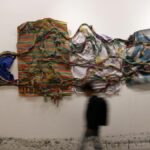They had called it a ‘vast open-air library’ before we got there. But that hadn’t quite prepared me for the sight of thousands of inscriptions carved into the sandstone surfaces of mountainsides in Jabal Ikmah, in Saudi Arabia’s AlUla region. Names of kings and traders, their official proclamations and records of transactions, notes on rituals performed and messages from those who had travelled through. A bibliothèque of a bygone age, written in at least 10 distinct languages, including Nabataean, Arabic’s precursor.
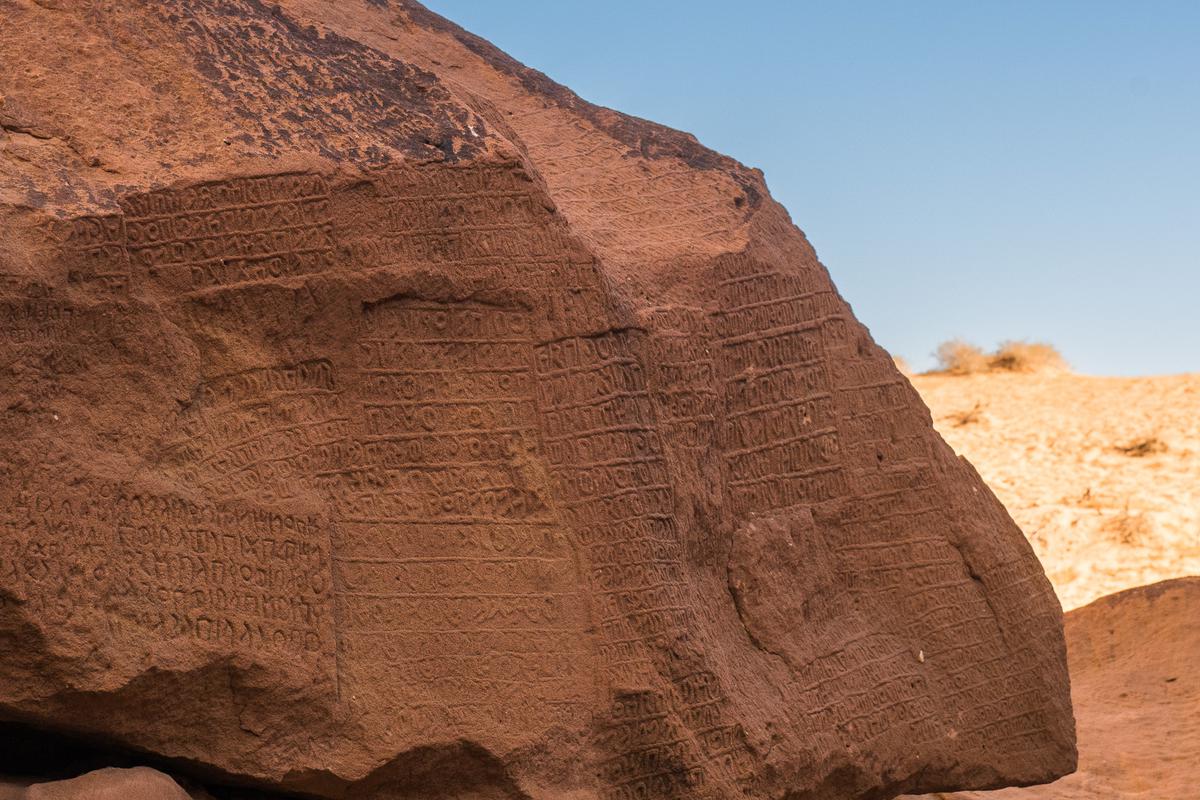
Jabal Ikmah
| Photo Credit:
Courtesy Royal Commission for AlUla
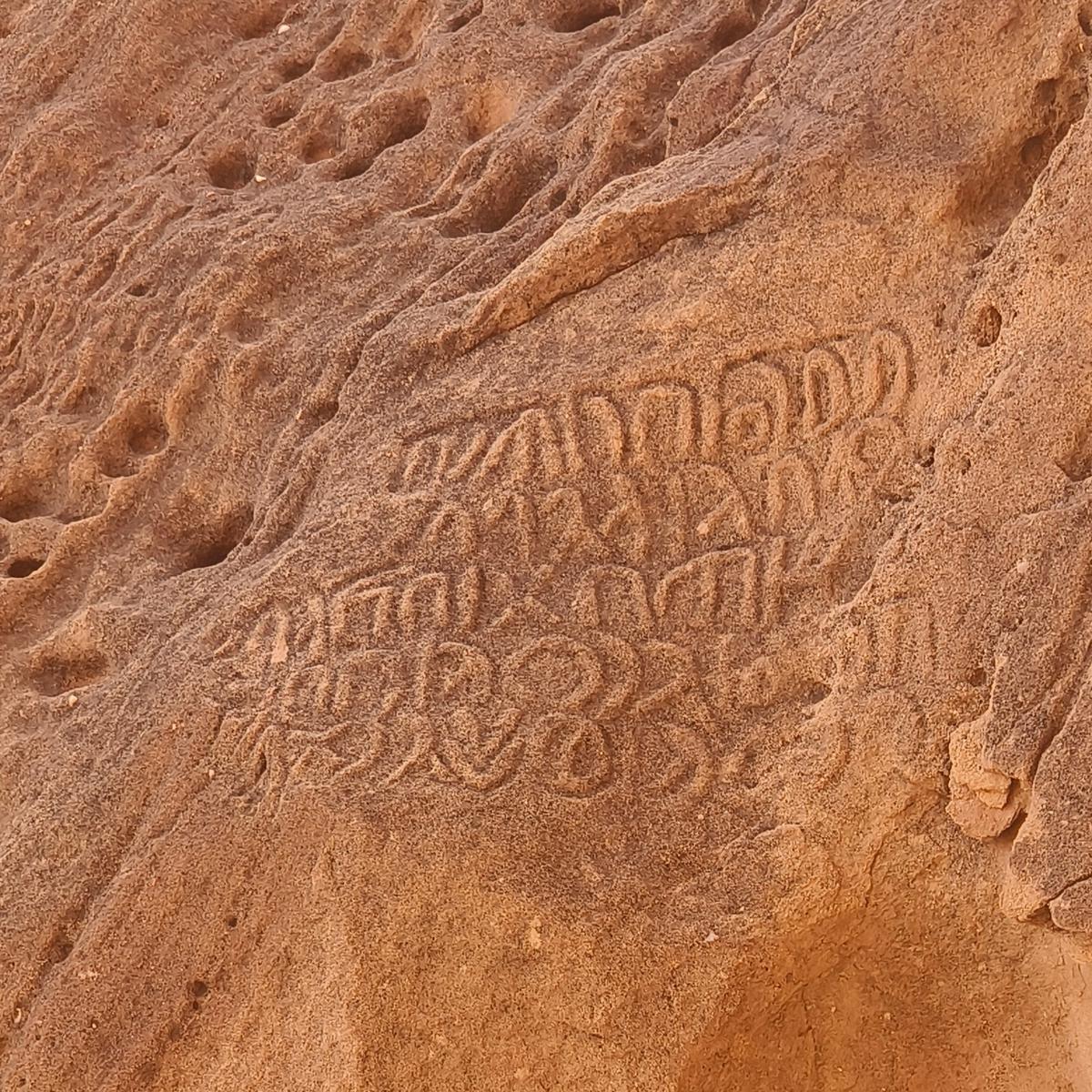
Inscriptions at Jabal Ikmah
I had joined an international group of journalists and academics to see first-hand the archaeological sites that are being thrown open to tourists. Ruins of ancient settlements such as Dadan, Tayma and the UNESCO World Heritage site of Hegra. While it was interesting to hear about the millions being spent to build immersive on-site museums, it was far more fascinating to learn of the historic discoveries being made. For instance, as far back as the early first millennium BCE, these sites were linked by verdant oases giving rise to influential agrarian kingdoms. And that these kingdoms controlled the trade along the Incense Road — the collective name given to a web of trade routes leading from southern Arabia, where frankincense was harvested, to the markets of Egypt, Rome and Mesopotamia.
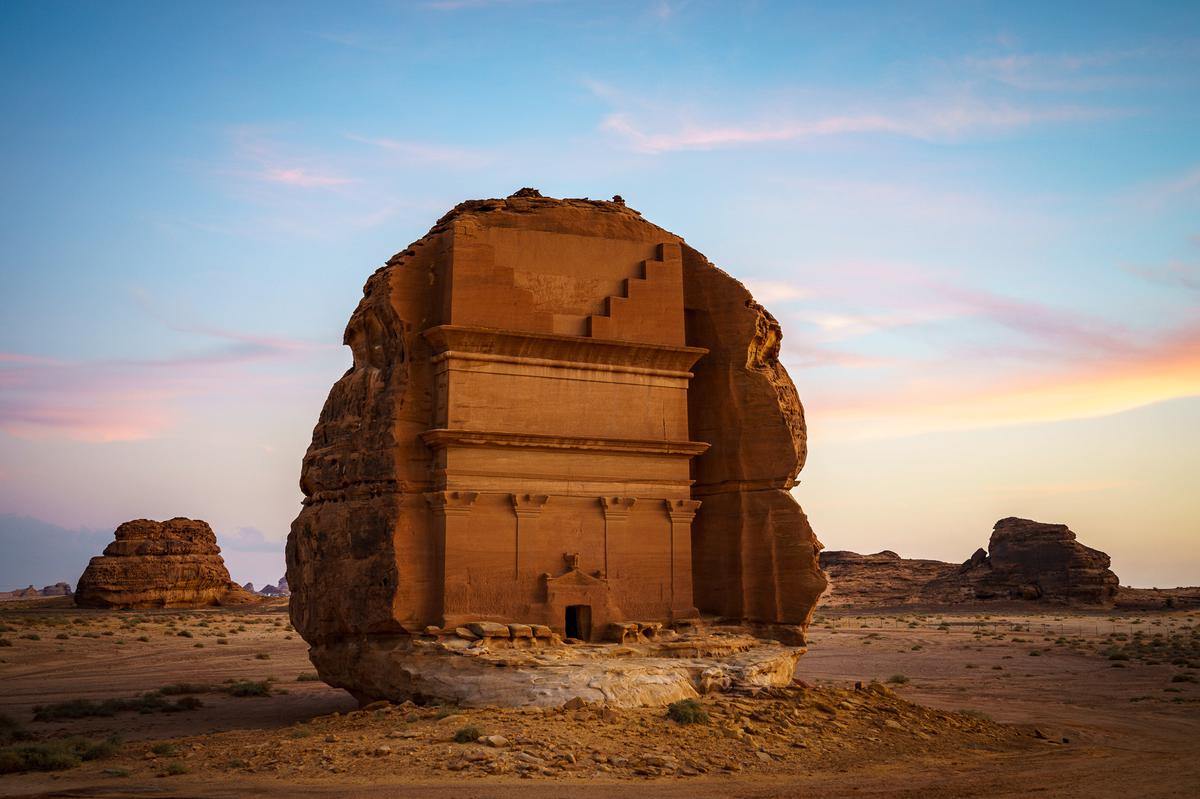
Hegra
| Photo Credit:
Jonathan Irish
AlUla’s place in history
“Incense can be compared to oil in modern times. And so, the Incense Road was a major evolution in terms of trade and economy,” said archaeologist Jérôme Rohmer, of the French National Center for Scientific Research as he walked us through an active dig site in Dadan that dates back to the 3rd millennium BCE. The French governmental agency is partnering with Saudi archaeologists in uncovering and interpreting ancient relics. While in today’s globalised economy incense might seem commonplace, back then, “thousands of temples burnt incense daily throughout the ancient world, from Italy to Egypt and Mesopotamia. So, the demand was huge but supply very limited”. Which meant that those who controlled the trade – i.e. the Dadanites, and the Lihyanites and Nabataeans who followed them — became rich and powerful.
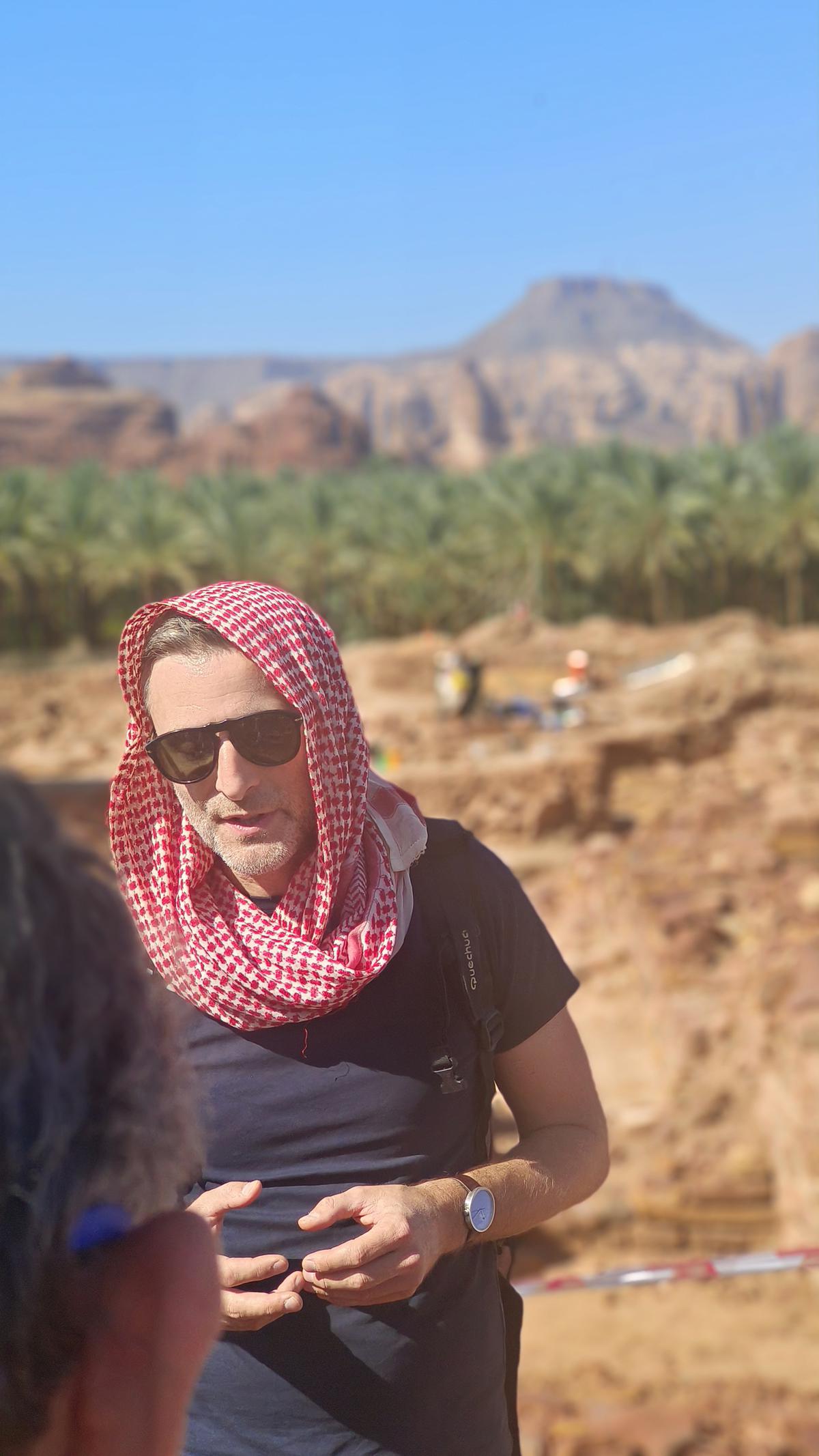
Jérôme Rohmer
| Photo Credit:
Prasad Ramamurthy
What’s already been revealed through surveys and excavations is that this region of Arabia has been continuously inhabited since as far back as the Palaeolithic age, 200,000 BCE. But the most interesting bit is how, just like today, in ancient times global trade had resulted in migration and the growth of heterogeneous societies. “We’ve discovered inscriptions in Minaean, a language spoken in ancient Yemen, 1,800 km south of here,” said Rohmer. The inscriptions speak of a very large autonomous colony of south Arabian traders who lived in Dadan to manage the incense caravans that ran through the kingdom. “From the writings we know these two populations practised the cults of each other, intermarried… The culture of Dadan was very cosmopolitan.”
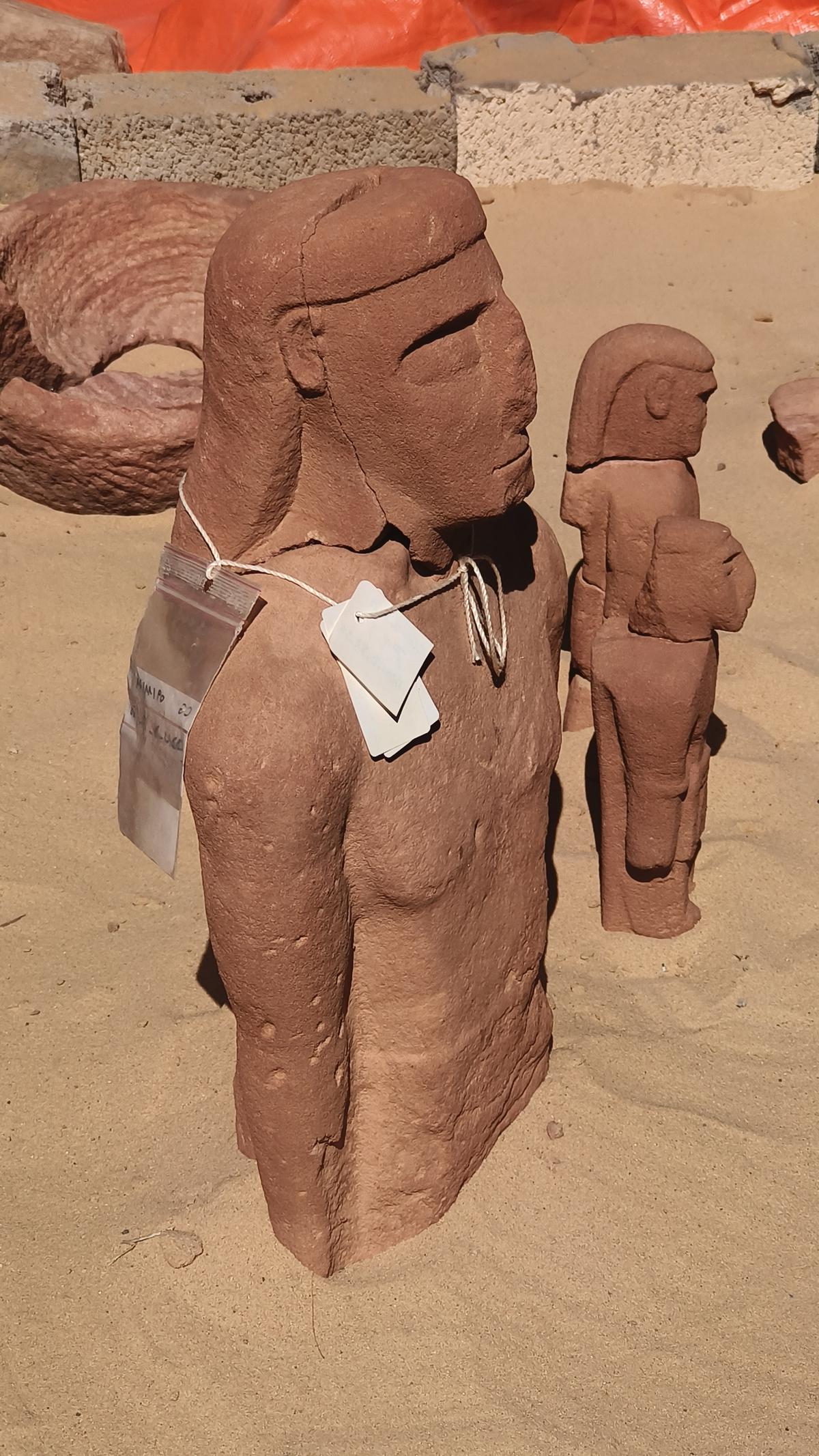
Statues found in AlUla that bear similarity to Egyptian statues
| Photo Credit:
Prasad Ramamurthy
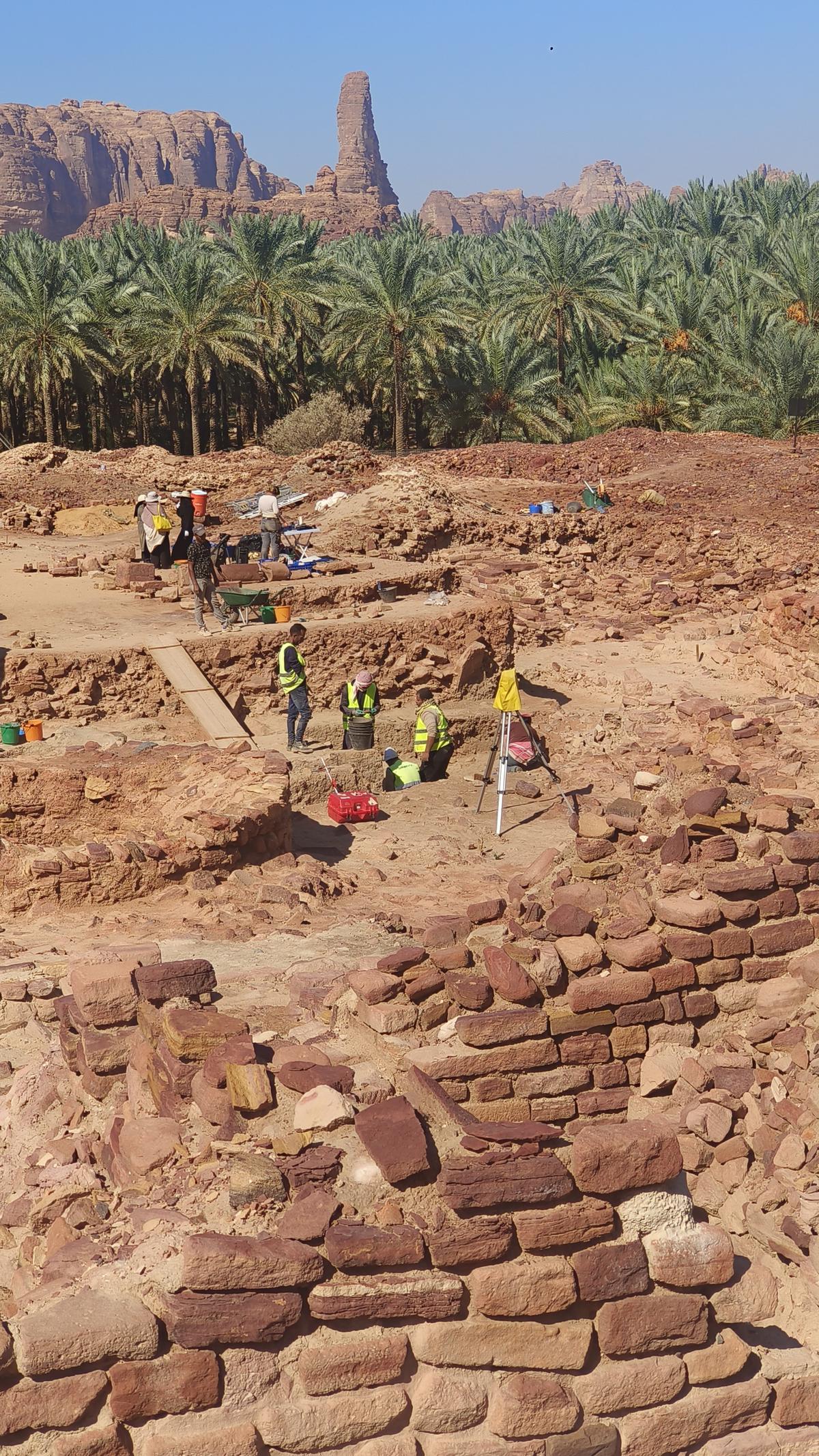
Dig site in Dadan
| Photo Credit:
Prasad Ramamurthy
One evening as the setting sun lit Hegra’s monolithic Nabataean tombs in golden light, I asked Janina Ramirez what she made of everything we’d seen. Ramirez, a co-traveller, teaches history at Oxford and her documentaries stream on the BBC. “I cannot overemphasise how important the finds in AlUla are in terms of global history,” she stated, emphatically. In her opinion, the discoveries push back the chronology of civilisation and relocate it outside of the established centres of Ancient Egypt, Greece and Persia. “Hegra, where niches were left open for visitors to honour their own deities, is a powerful reminder that cooperation between people of different cultures and beliefs have long been sought by the powerful and civilised.”
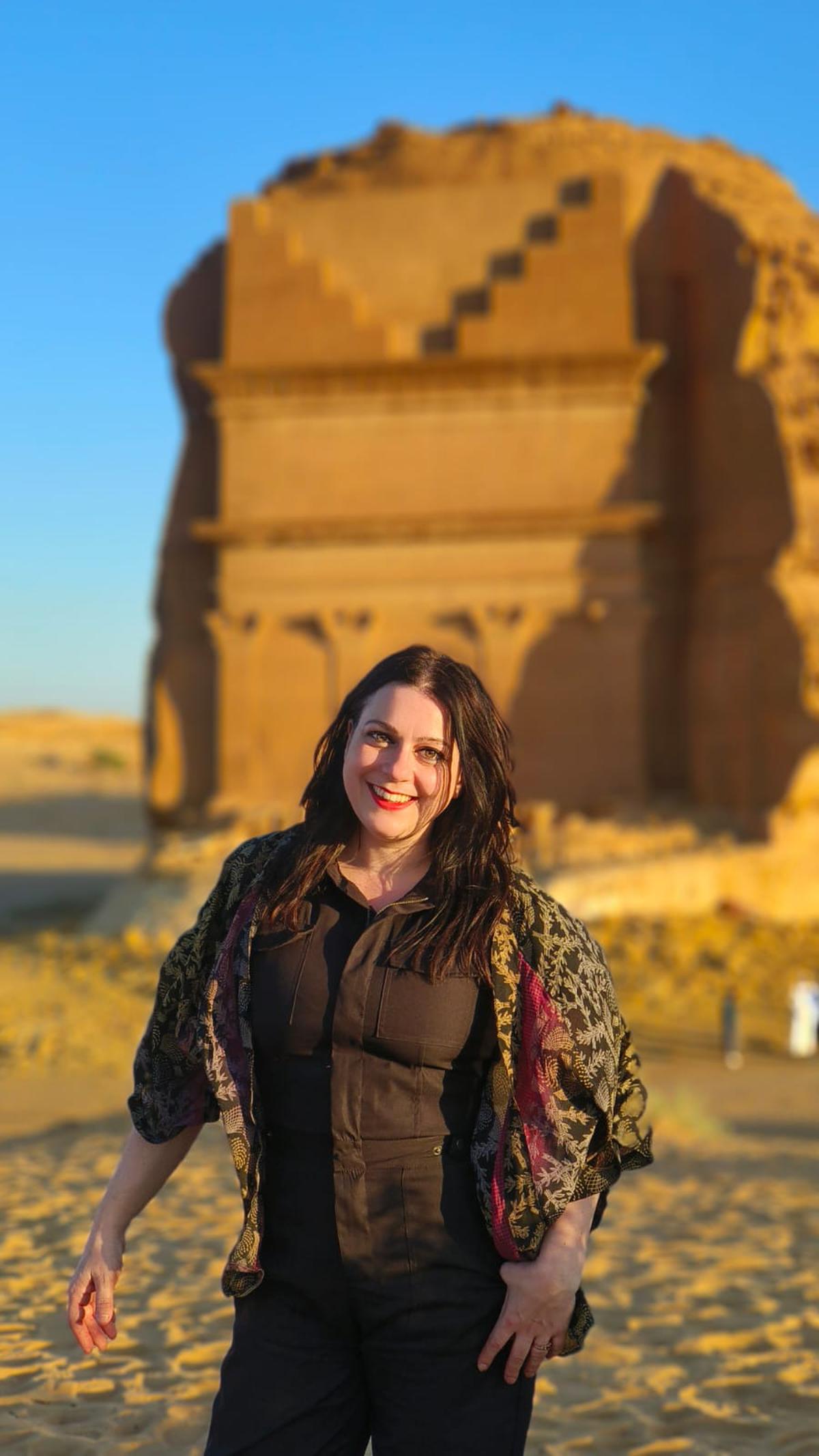
Janina Ramirez
| Photo Credit:
Prasad Ramamurthy
3 things to know
• AlUla is a north-western region of Saudi Arabia
• Main sites: Dadan, Jabal Ikmah, Wadi AlNaam, Hegra
• Key sights: Inscriptions in Jabal Ikmah
◦ Petroglyphs from 5,000 BCE showing ostriches in Wadi AlNaam
◦ Excavation of an old temple and the lion tomb in Dadan
◦ The Nabataean funerary monuments of Hegra
More power to the women
All this, some would argue, was forgotten with the advent of Islam and the impact of colonialism. Change, though, is afoot in Saudi Arabia, which recently announced a relaxation in its alcohol sale policy — non-Muslim diplomats will be able to legally buy alcohol. An important step as it slowly pivots from a carbon fuel-focussed economy to one that seeks other ways to generate revenue and employment, especially tourism. To this end, plans include a clutch of luxury hotels, a geological park and an African cheetah conservancy to resuscitate a big cat that’s been teetering on the edge of extinction. Another visible change, the presence of women in the workforce. Right from Immigration, to working at stores, cafes, and as guides at the archaeological sites we visited.
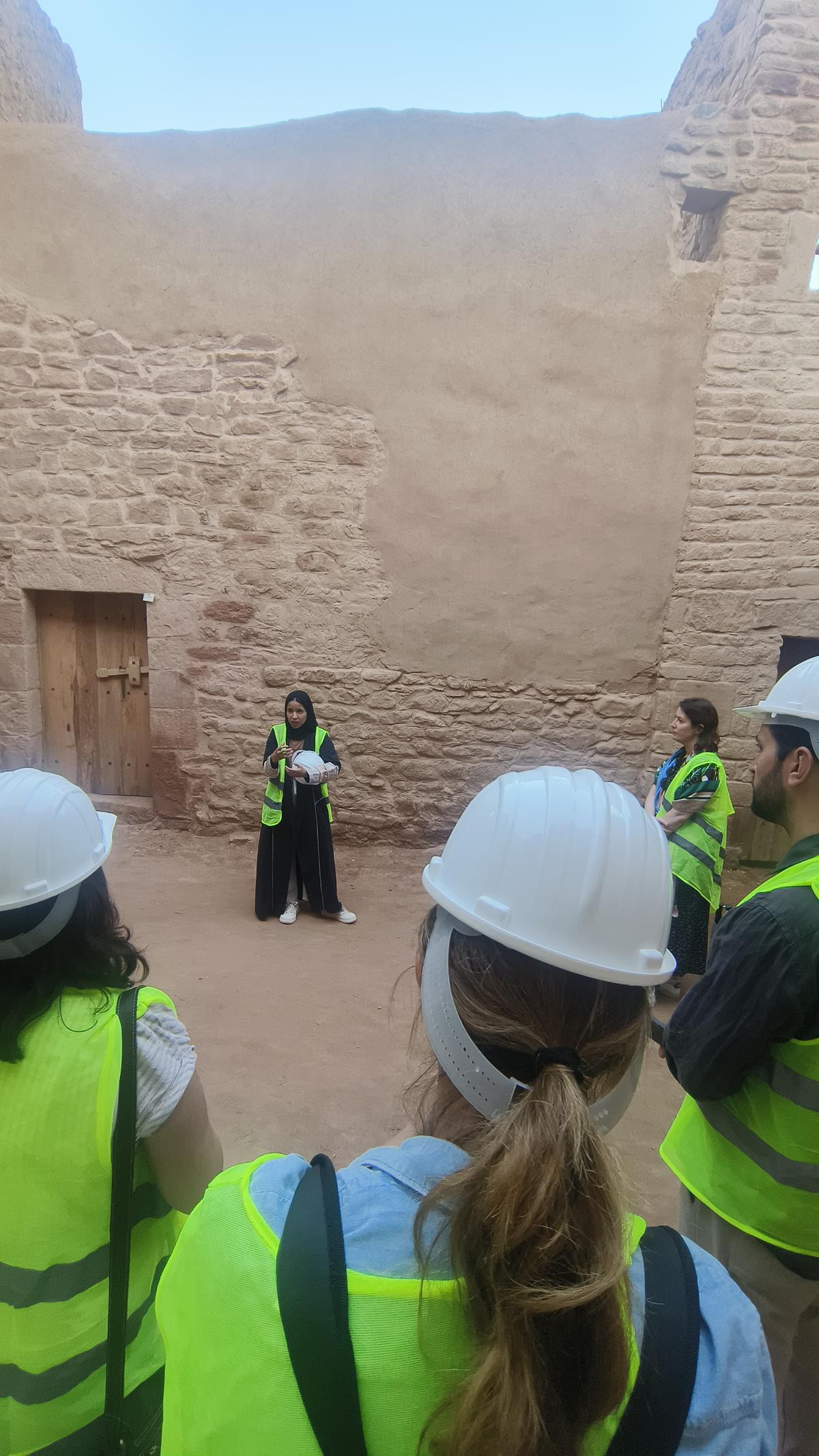
A guide walking visitors through the restored Old Town of AlUla
| Photo Credit:
Prasad Ramamurthy
Call me ill-informed, but it came as a bit of surprise to me. “I have seen the environment change in Saudi Arabia,” said Pramod K.G., a fellow traveller. Pramod is the co-founder of Eka Cultural Resources and Research, an agency that aids private individuals and museums alike, in archiving. He has been visiting Saudi Arabia over the past decade to work on a private collection. Indicating to one of our guides who’d driven off in her Honda sedan, he said: “The mobility of being able to drive has allowed an entire generation of women to go out and do their own thing. The other thing that I’ve noticed is the withdrawal of the compulsory hijab rule, which has meant that locals and visitors are perfectly free to wear what they want to wear.”
A fact corroborated by several of the women I spoke to — both local and expat. “That so many of the curators and experts are women also impressed me,” Ramirez chimed in, “as it means the narratives being shared in the museums take into account the many often silenced voices in history.”
On a sunny morning, our 28-year-old guide, Wedad Al Yaseen, pointed out the Lihyanite funerary chambers in Dadan, speaking eloquently about their history. The linguistics graduate was dressed in an embroidered coat thrown over an athleisure outfit. “We always knew these were ancient sites,” she said, as she narrated childhood escapades of playing hide-as-seek with her siblings in and around the site. “But till recently we did not know how important they were. It’s been overwhelming to learn about our ancestors and to know that I am standing in a place that was once part of a mighty kingdom. To me this site is not about our history, it’s about human legacy.”
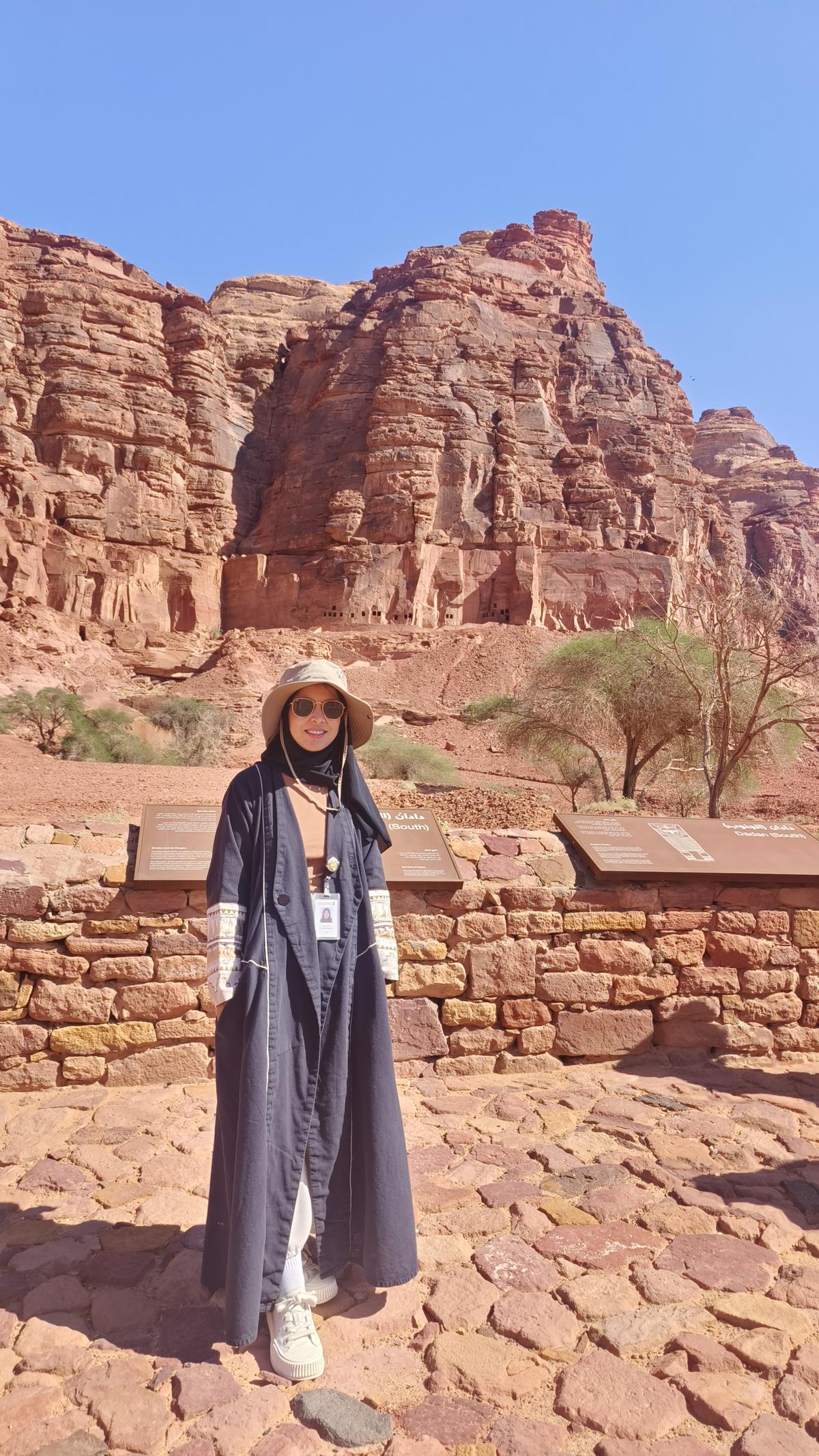
Wedad Al Yaseen
| Photo Credit:
Prasad Ramamurthy
What about modern Saudi Arabia’s legacy, I posed, as we got ready to leave. Does she have an elevator pitch to those outside the kingdom? “We all have stereotypes about each other,” she said, matter-of-factly. “I have thought of some places as being unsafe and have discovered I was wrong. So, I would say don’t judge till you’ve seen for yourself.” Fair enough.
The writer is based in Mumbai and reports on travel and culture
#Saudi #Arabia #reopening #Incense #Road



